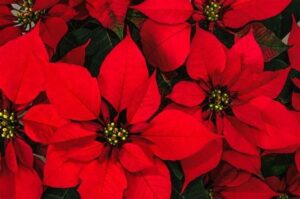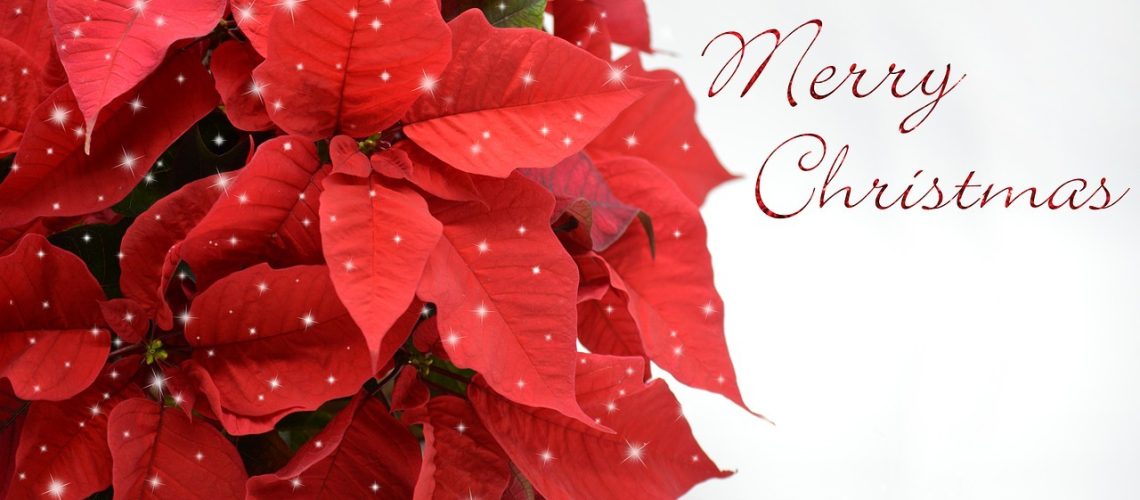 A plant that graced the botanical gardens of the Aztec empire over 600 years ago, and the flower of Holy Night legends, is the poinsettia (poin seh tee uh), or flor de nochebuena in Spanish. Seen everywhere for sale during a short six weeks of the year, this plant has come to symbolize Christmas.
A plant that graced the botanical gardens of the Aztec empire over 600 years ago, and the flower of Holy Night legends, is the poinsettia (poin seh tee uh), or flor de nochebuena in Spanish. Seen everywhere for sale during a short six weeks of the year, this plant has come to symbolize Christmas. A Practical Plant
A Practical PlantPoinsettias are native to Central America. These plants, called “cuetlaxochitl,” meaning “brilliant flower,” were used by ancient Aztecs to make a purple dye for clothing and makeup. Also, the sap of a poinsettia was used to treat fevers.
A Mexican Treasure
In southern Mexico, poinsettias flower for a short amount of time in the winter. In 1828, the U.S. ambassador to Mexico, Joel Poinsett, visited southern Mexico and became enchanted with the poinsettias he saw there. He brought some of the plants back to his greenhouses in South Carolina, and he nurtured his poinsettias and shared them with friends as well as botanical gardens. These plants got their English name from Poinsett.
Poinsettias and Christmas

There are many connections between poinsettias and Christmas. For one, the poinsettia plant has a similar shape to the star of Bethlehem. Also, the plant is red and green, which are colors associated with Christmas. In addition, there is a legend about the poinsettia and the birth of Jesus. According to the legend, long ago, a young Mexican girl named Pepita wanted to bring a gift to the church to honor the baby Jesus, but she didn’t have anything of value to give. So she picked some roadside weeds and laid them before the altar. Suddenly, the weeds turned into a beautiful bouquet of red flowers. People who witnessed this miracle called them the Flowers of the Holy Night.

